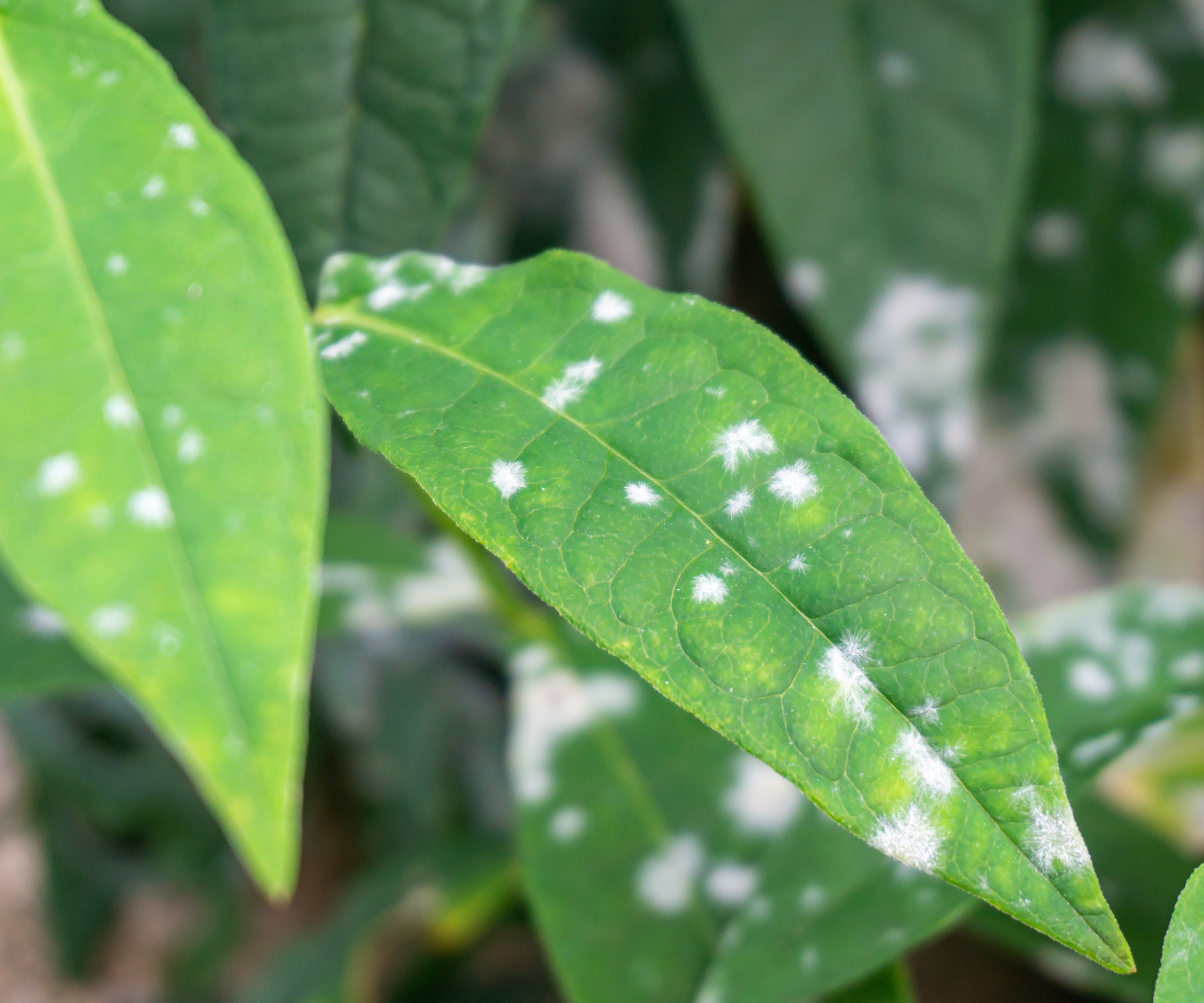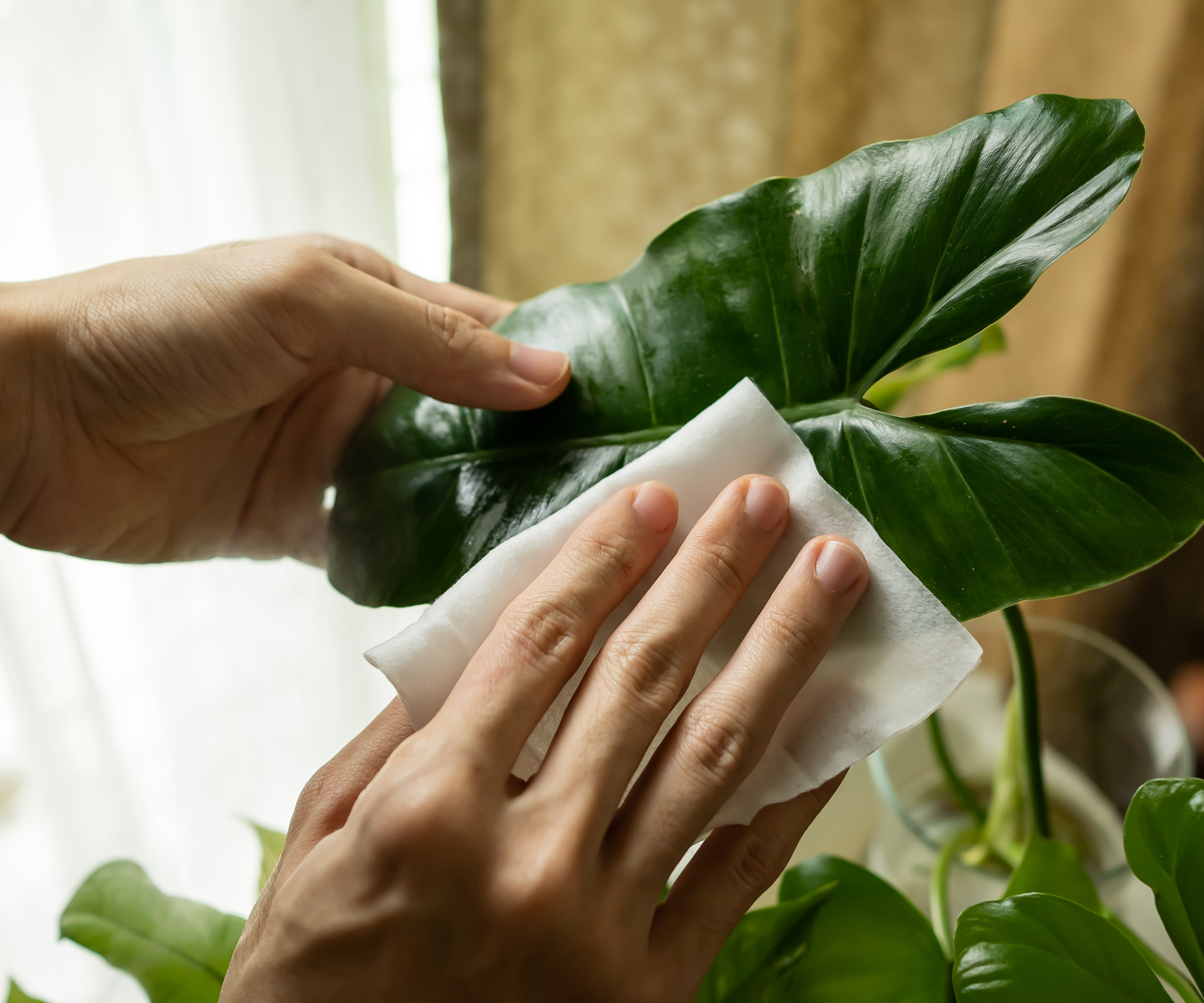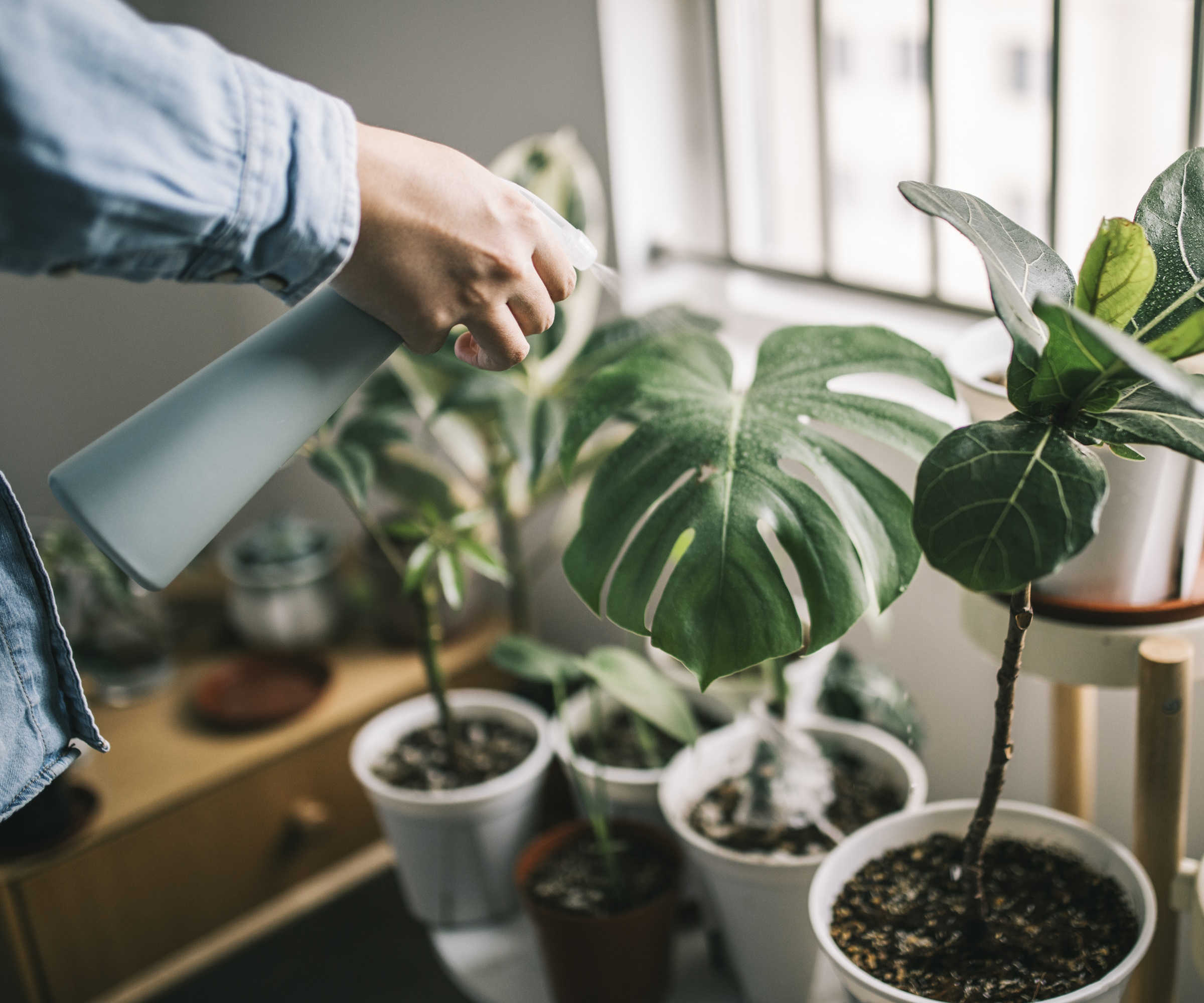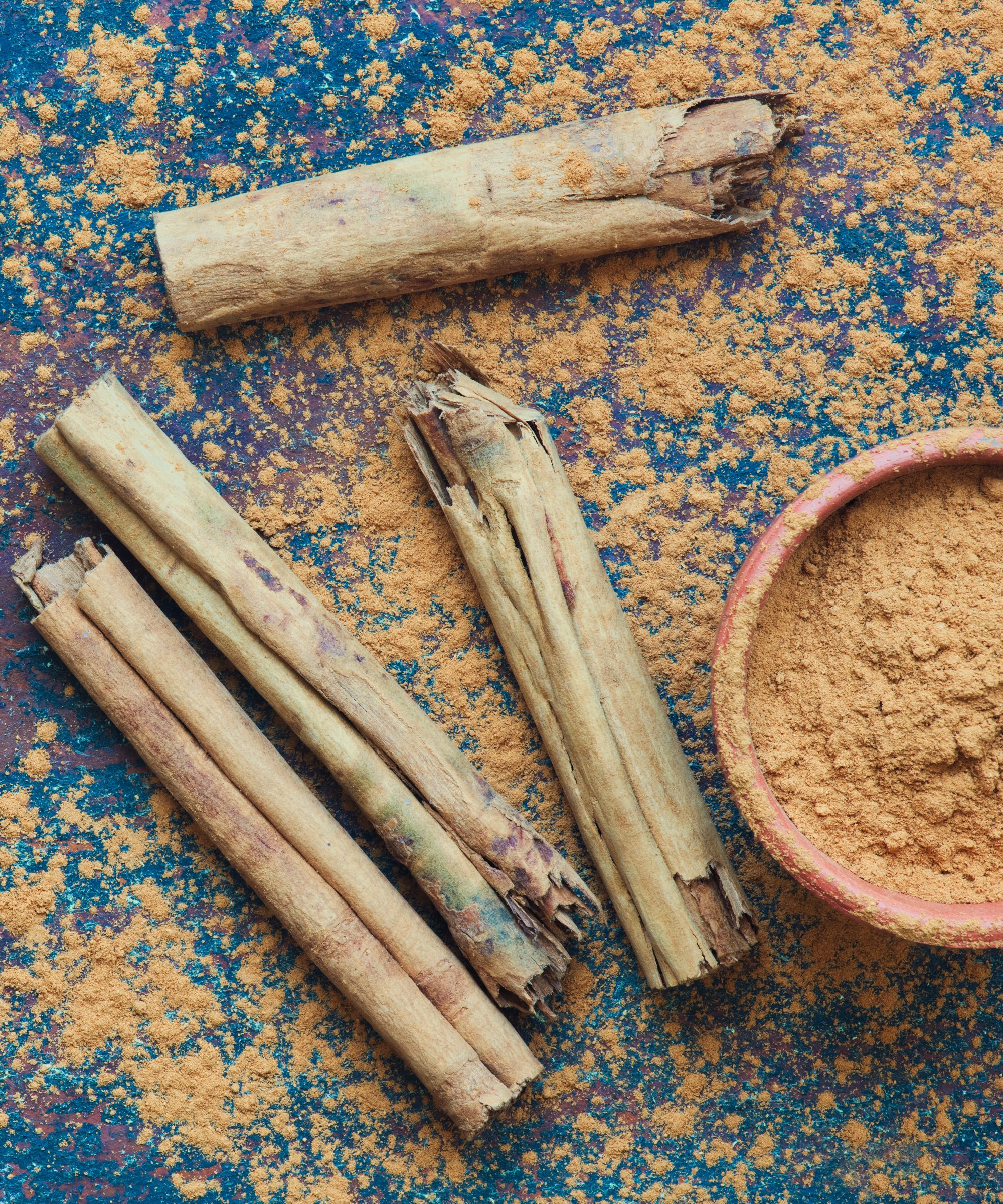How to get rid of white mold on plants - 5 natural solutions
Protect your plants from white mold using these eco-friendly, expert remedies


Powdery mildew, another name for white mold, is a fungal disease that attacks a variety of plants and vegetation. In certain situations, this white fuzzy mold can cover a complete plant, including the fruits and buds, with gray and white fungal spores.
White mold, similar to green mold, can also cover the leaves and stems of both indoor and outdoor plants. Since white mold is contagious if it is not treated, it can spread swiftly to other plants. Although a small amount of white powder is usually innocuous, the more of it spreads, the more of a problem it might become.
This fungal infection can hinder plants' ability to photosynthesise, which will eventually cause them to deteriorate and wither, compromising the overall health of your plants.

How to get rid of white mold on plants - 5 natural solutions
White mold can be quite a nuisance for plants, but fear not, there are natural ways to combat this issue.
1. Apply neem oil

According to Diana Cox, a plant expert from TheGardeningTalk.com, one natural pesticide that also works against fungi, such as white mold, is neem oil. Neem oil is derived from the seeds of the neem tree, a tropical tree native to India.
As well as having its uses in treating and preventing pest problems, it can also work against fungal infections. Just mix two tablespoons of organic neem oil from Amazon with two liters of water and spray the affected areas thoroughly every few days.
Remember, good ventilation is key while using neem oil, so open those windows and let the fresh air in. Repeat the application once a week until the mold vanishes, leaving your plant healthy and happy.
Design expertise in your inbox – from inspiring decorating ideas and beautiful celebrity homes to practical gardening advice and shopping round-ups.

Diana Cox is the proud founder of TheGardeningTalk.com and has over a decade of gardening experience. Through her blog, she aims to inspire and motivate fellow gardeners by sharing practical techniques that are grounded in both personal experience and thorough research.
2. Incorporate mouthwash or milk

Ethanol, a component of mouthwash, has the ability to destroy the fungal spores that create white mold. Using a cotton ball or spray bottle, apply a mixture of one part mouthwash to three parts water on the affected areas. Steer clear of saturation. Mouthwash works well to treat white mold, but if applied excessively, it can burn leaves and damage newly sprouting plants.
Many gardeners use milk and whey instead of artificial fungicides when their plants become infected with fungi. According to certain research, applying milk to afflicted plants is a far more effective way to eradicate mold and mildew than using other chemicals.
Every two weeks, spray the afflicted leaves with a solution made of 40% milk and 60% water. For maximum impact, use the milk straight from the container without diluting it first.
3. Spray with baking soda

Another popular home item, baking soda can also work as a fungicide to kill white mold. By altering the iron levels, baking soda destroys fungal cells in this way, which uses it as a natural fungicide. Because baking soda forms an alkaline residue layer on plants' leaves, it also acts as a fungal preventative.
Mix one teaspoon of baking soda with a liter of water in a spray bottle from Amazon. Then, gently mist the affected areas, focusing on the white patches,’ says Alexander Testel, founder of Frugal Frontier. ‘But remember, this solution can be a bit strong, so use a light touch and avoid over-spraying. Think of it like giving your plant a refreshing spritz, not a baking soda bath.’
Apply it to the affected areas, then wait for it to dry before giving your plants more watering. Repeat this every 3-4 days until the mold disappears and your plant is fungal free.

Alex Testel is an avid gardener and horticulture expert. At Frugal Frontier, his approach to gardening is anchored in eco-conscious and efficient methods. He specializes in sustainable and practical gardening solutions, empowering others to cultivate their own thriving gardens.
4. Apply vinegar

Another all-natural antifungal that can help get rid of white mold on your plants is vinegar. To treat the afflicted leaves and stems, you can combine two teaspoons of apple cider vinegar with one liter of water and mist. Spray it onto the infected leaves and stems every few days until the mold is gone. Vinegar's acidity is hostile to mold growth.
Mixing vinegar and baking soda is also an incredibly effective solution that creates a paste. Vinegar is great in general for removing small amounts of mold. You can mix it with lemon juice to mask the smell it emits.
5. Try some cinnamon

‘Cinnamon is a spice that can flavor your plants and has antimicrobial qualities,’ says botanist and plant expert Keirsten Rankel. ‘You can use some cinnamon powder to easily remove the mold from the leaves of your planet.’
Cinnamon contains a chemical compound called cinnamaldehyde, which has shown to be an effective fungicide. Cinnamon can also prevent mold from taking hold.
If using ground cinnamon doesn't work on your plants, you can try making a cinnamon spray: boil two cups of water with four cinnamon sticks for fifteen minutes, then drain the liquid and add one teaspoon of dish soap.

Keirstan Rankel is the resident botanist at Greg, the AI powered app to know when to water your plants, how much light they need, and when to fertilize. Keirstan graduated with her masters degree in Ecology and Evolutionary Biology from Tulane University in 2019.
FAQs
Can overwatering cause white mold?
Yes, overwatering contributes to mold growth. Water your plants at the base and in the morning to allow foliage to dry during the day.
It can be difficult to get rid of white mold on plants because most solutions that can kill mold also have the potential to harm your plants. So, try to be really careful with your application – only spraying your solution directly on the mold and not applying too much.
It’s best to take the overly-cautious yet lengthy approach by applying just a little bit of solution at a time and reapplying until the mold is gone.

Seraphina is a contributing editor at Homes & Gardens, writing Solved features on organizing and storage. She loves to decorate and also grow her own produce from her home in London. Her previous experience includes working at Women's Health and Fabulous Magazine.